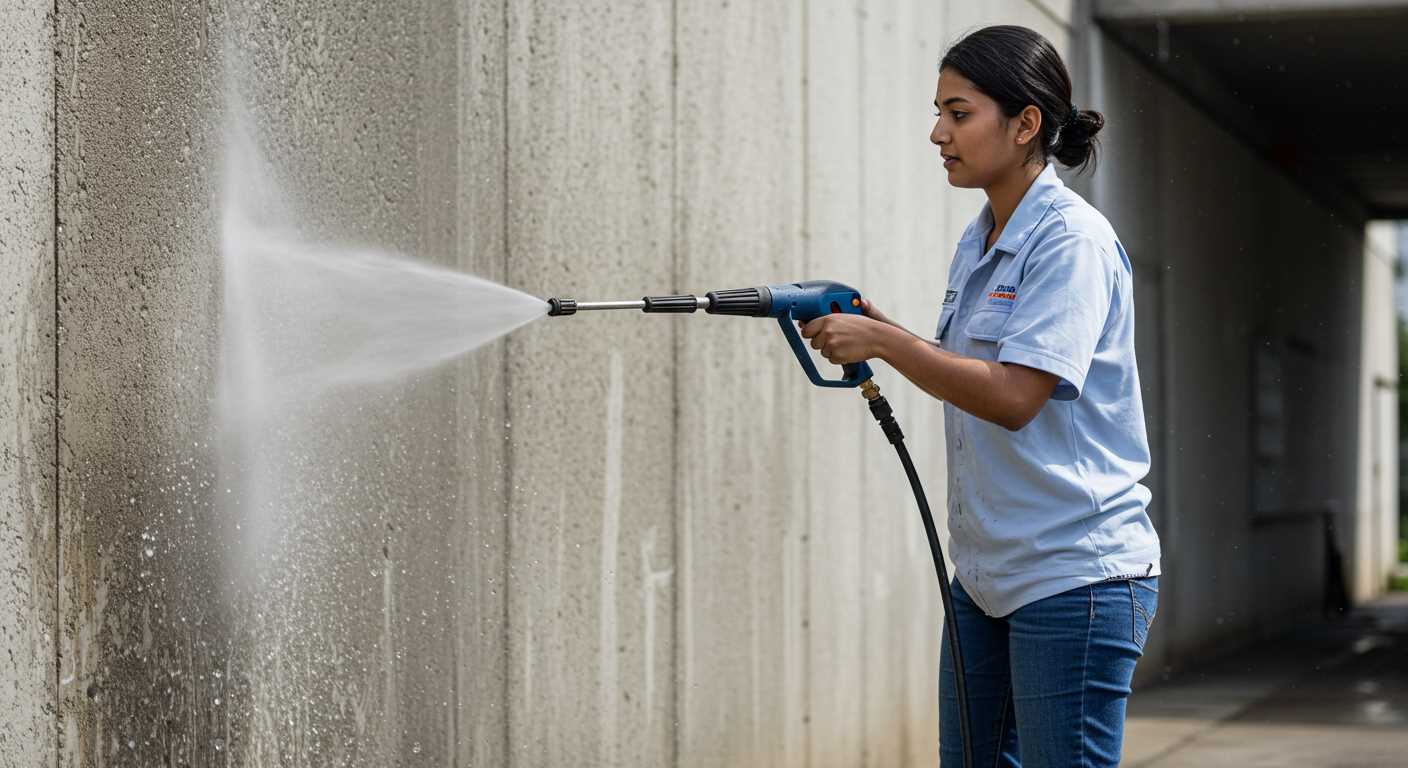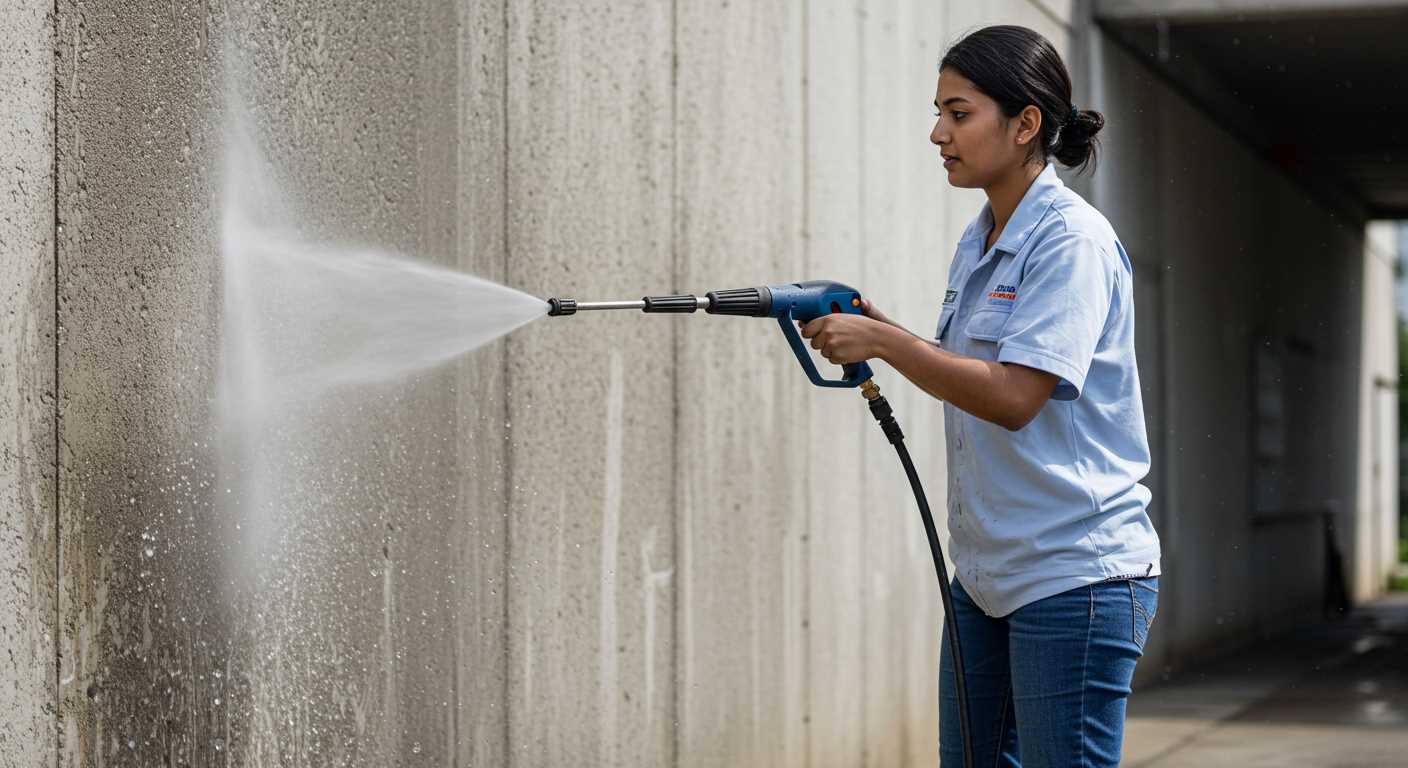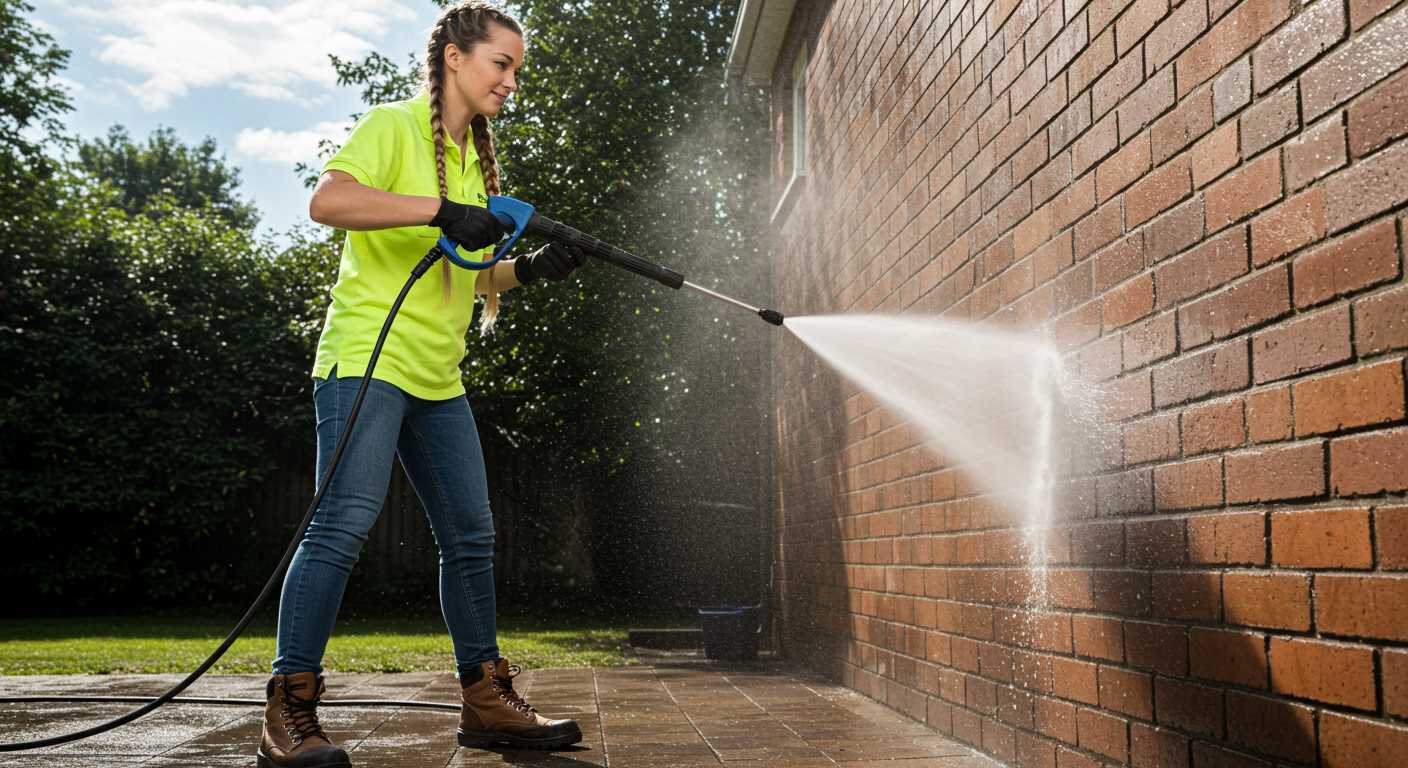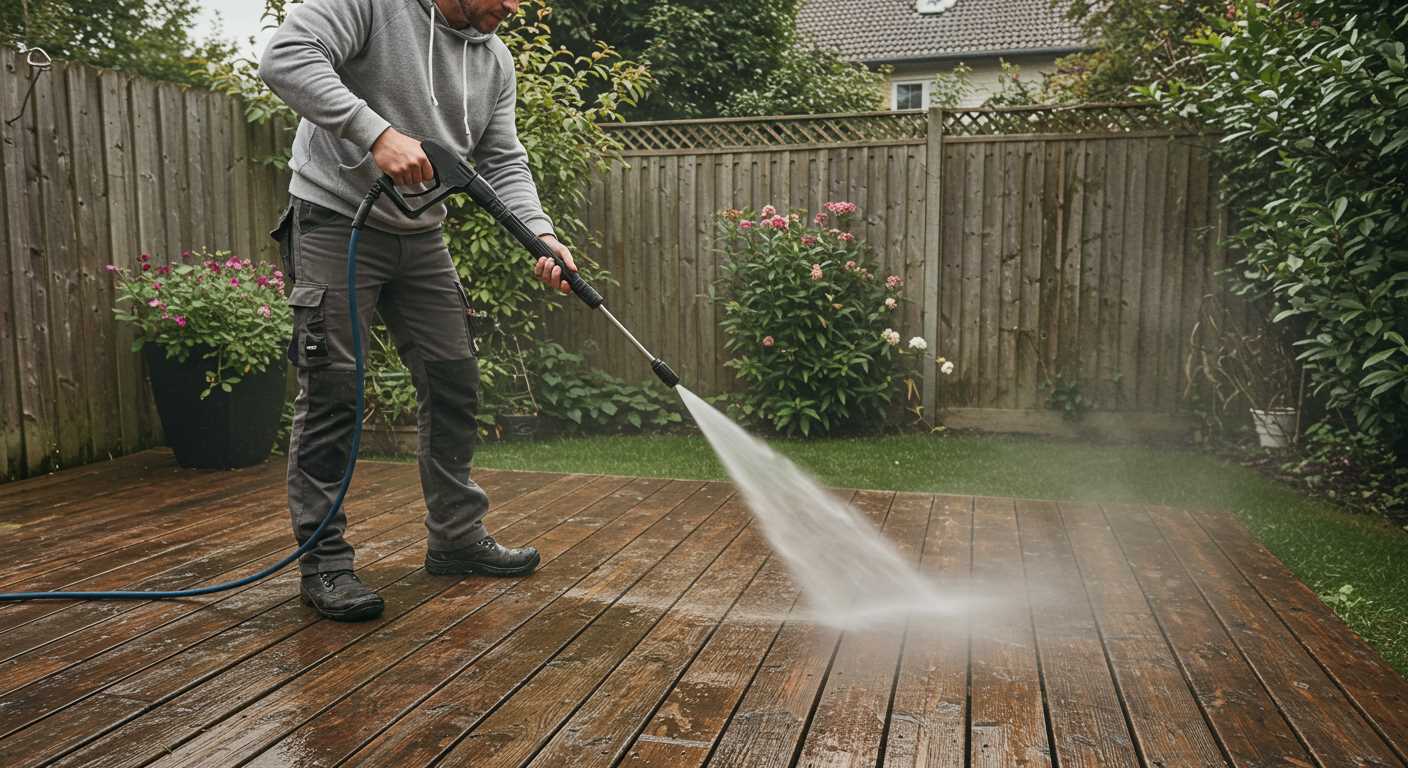




For an impressive finish, consider a blend of high-pressure cleaning and protective gloss treatment. This combination not only removes dirt and grime but also leaves a sleek, shiny layer that enhances the vehicle’s appearance. I recommend starting with a dedicated nozzle that offers a fan spray, ensuring a broad coverage while being gentle on the surface.
One of my favourite methods involves using a pre-soak solution to lift stubborn debris before the high-pressure application. During my years in the industry, I found that letting the pre-soak dwell for about five minutes makes a noticeable difference. It’s all about allowing the solution to penetrate and break down tough stains. After rinsing, applying the gloss treatment while the surface is still wet helps to evenly distribute the product.
Pay attention to the water temperature as well. Hot water can enhance the effectiveness of both the cleaning and the glazing agents. I’ve experimented with different temperatures and discovered that a warm rinse followed by a cool finish not only protects the paint but also gives it a radiant shine. Always ensure that you follow the manufacturer’s instructions for the gloss product to achieve optimal results.
Finally, consider using a soft cloth or mitt after the application to buff the surface, enhancing that gleam. I’ve seen firsthand how this final touch can elevate the finish, making it look professionally polished. Trust me, the satisfaction of seeing a vehicle transformed is worth the effort!
Cleaning Technique for Your Vehicle
Begin with a thorough rinse to remove loose dirt and debris. Using a wide-angle nozzle, apply water from top to bottom. This method ensures that grime flows downwards, preventing it from settling back onto the surface.
Application of the Foaming Agent
Next, switch to a foaming attachment. Fill the reservoir with a pH-neutral foam solution specifically designed for automotive finishes. Apply a generous layer, letting it dwell for a few minutes. The foam encapsulates contaminants, making them easier to remove.
- Avoid direct sunlight to prevent premature drying.
- Use a soft brush or mitt to agitate the foam gently, targeting stubborn spots.
Final Rinse and Protection
After agitation, perform a thorough rinse, ensuring all residues are washed away. Follow up with a wax application, ensuring an even coat. This layer not only enhances shine but also provides a protective barrier against environmental elements.
- Use a low-pressure rinse to avoid disrupting the wax layer.
- Consider applying a detailing spray for an added gloss finish.
Lastly, dry the surfaces with microfiber towels to prevent water spots. Regular maintenance will keep your vehicle looking pristine and well-protected.
Choosing the Right Pressure Washer for Car Cleaning
Opt for a model with a minimum of 1200 PSI and 1.4 GPM for optimal results. I once tested a unit that barely met these specs, and it was a struggle to remove road grime. A powerful machine makes a significant difference in achieving that spotless finish.
Types to Consider
Electric models are usually lighter and quieter. I remember using a compact electric unit that easily handled a family hatchback without disturbing the neighbours. However, if you have a larger vehicle or a build-up of tough dirt, a gas-powered option offers unmatched power and mobility. I found that gas models can tackle even the most stubborn debris with ease.
Accessories and Features
Pay attention to included nozzles. A rotating nozzle can significantly enhance cleaning efficiency. I once used a machine that came with a turbo nozzle, and the difference was astounding–it cut my time in half. Also, consider a detergent tank; it simplifies the process of applying cleaning solutions. My go-to model has this feature, which has saved me countless trips back and forth to refill bottles.
Selecting the Best Wax for Use with a Pressure Washer
For optimal results, I recommend choosing a product specifically designed for use alongside high-velocity cleaning devices. These formulations typically feature a consistency that allows for effective application under forceful spray conditions. In my experience, liquid waxes tend to perform better than paste alternatives, as they disperse evenly and adhere more effectively to surfaces.
Key Features to Look For
When evaluating wax products, consider the following attributes:
| Feature | Description |
|---|---|
| Water Beading | Choose a wax that promotes water beading to enhance protection and maintain a glossy finish. |
| UV Protection | Look for UV inhibitors to guard against sun damage, ensuring longevity of the shine. |
| Ease of Application | A product that can be quickly and easily applied saves time and effort during the process. |
| Compatibility | Ensure the wax is compatible with your cleaning equipment to avoid damaging the finish. |
| Durability | Select a longer-lasting formula to reduce the frequency of reapplication. |
Top Recommendations
Based on my hands-on experience, here are a few standout options:
- Meguiar’s Ultimate Liquid Wax – This product provides exceptional shine and protection, ideal for use after a thorough rinse.
- Chemical Guys Butter Wet Wax – Known for its easy application and rich, deep shine, this wax works well even under high pressure.
- Turtle Wax Ice Seal N Shine – A versatile choice, it offers impressive durability with minimal effort required for application.
Choosing the right formulation can significantly enhance the results of your washing routine. Experiment with different products to find what suits your needs best, and enjoy the satisfaction of a well-protected and gleaming surface.
Preparing Your Vehicle for a Thorough Wash
Start by removing any loose debris from the exterior. A quick walk around the vehicle to inspect for dirt, leaves, or other particles can prevent scratches during the washing process. I always recommend using a soft brush or a microfiber cloth for this task to avoid damaging the paint.
Next, ensure all windows and doors are closed tightly. This step is critical; even a small gap can allow water to seep in, potentially causing damage to the interior. Also, check that the fuel cap is securely fastened. It’s a simple measure, but one that can save you from issues later on.
Gather Necessary Equipment
Have your supplies ready before starting. A suitable nozzle for your equipment is key; I’ve found that using a wide fan spray provides an even distribution of water while reducing the risk of damage. If you have any stubborn spots, pre-treat them with an appropriate cleaner. Just be careful not to let it dry on the surface.
Assess the Surroundings
Consider the area where you will perform the wash. Choose a location that allows for proper drainage and is away from direct sunlight. I’ve learned the hard way that washing under the sun can cause soap to dry too quickly, leaving streaks on the surface.
Finally, gather your chosen wax product. Having everything set up in advance streamlines the process and ensures you won’t miss any steps. Preparation sets the stage for a successful cleaning session.
Applying Wax with a Pressure Washer: Step-by-Step Guide
First, ensure the surface is completely dry after washing. Any residual moisture can hinder the wax application process. Here’s how to do it effectively:
- Gather Supplies:
- Pressure sprayer with wax attachment
- High-quality liquid wax suitable for pressure application
- Microfiber cloths for buffing
- Water source and extension cord (if needed)
- Prepare the Wax Mixture:
- Follow manufacturer instructions to dilute the wax concentrate. This is crucial for optimal performance.
- Mix the solution in the reservoir of your sprayer to ensure even application.
- Set Up the Equipment:
- Attach the wax nozzle to the sprayer. Ensure a tight fit to prevent leaks.
- Adjust the pressure settings to a low or medium range to prevent damage to the surface.
- Apply the Wax:
- Start at the top of the vehicle and work your way down, ensuring even coverage.
- Use a sweeping motion to apply the wax, keeping the nozzle at least 2 feet away from the surface.
- Allow to Set:
- Let the wax sit for the recommended time as per the product instructions. This usually ranges from 5 to 10 minutes.
- Buff the Surface:
- Using a clean microfiber cloth, buff the surface gently in circular motions.
- Check for any missed spots and touch them up as needed.
I’ve seen plenty of people rush through this process, thinking they can skip steps, but taking your time pays off in the long run. A well-applied coat not only looks great but offers excellent protection too. Remember, patience is key!
Common Mistakes to Avoid When Using Pressure Washer Wax
Always test wax on a small, inconspicuous area before full application. I learned this the hard way when I used a new product without checking compatibility, resulting in discolouration on my vehicle’s surface.
Using too high a setting can damage the finish. I once cranked up the pressure for better results but ended up with swirl marks that took hours to polish out. Stick to the recommended pressure for wax application.
Neglecting to rinse off dirt and debris beforehand is a common oversight. I’ve seen too many enthusiasts skip this step, only to cause scratches. A proper pre-rinse ensures a smoother process.
Overapplying wax is another frequent error. Initially, I thought more would yield better protection, but a thick layer just made it harder to rinse off. A light, even coat is all that’s needed.
Not allowing adequate drying time after application can lead to streaks and spots. I once rushed this step and regretted it; the finish wasn’t as glossy as I had hoped. Make sure to give it time to bond.
Don’t forget to choose the right product. I’ve tested various solutions, and not all are suitable for high-velocity applications. Check compatibility with your equipment. For those looking to enhance their wash routine, consider exploring the best car wash soap for pressure washers.
Lastly, overlooking the manufacturer’s instructions can lead to less-than-ideal outcomes. Always follow the guidelines for both the wax and the equipment to ensure optimal results. Trust me, it saves time and frustration.
Maintaining Your Pressure Washer After Waxing a Car
After applying a protective coat, it’s crucial to care for the equipment to ensure its longevity and performance. Rinse the nozzle and hose thoroughly to remove any leftover product. This helps prevent clogging, which can impact functionality during future tasks. I’ve had my fair share of struggles with stubborn residues if I skipped this step. A quick flush saves a lot of hassle later.
Cleaning the Components
Inspect the filter and pump for any wax build-up. Regularly cleaning these components will keep your machine running smoothly. I learned the hard way that neglecting this can lead to costly repairs. Use a soft brush to dislodge any debris while flushing the system with clean water.
Storing Properly
Store your device in a dry, cool location. If you plan on a long break between uses, consider draining the water from the system and detaching the hose to prevent any potential damage from freeze. I always add a splash of anti-freeze to the pump during winter months; it’s a simple step that extends the life of the equipment. Protecting the exterior with a cover also prevents dust accumulation and potential rusting.
Alternative Methods for Waxing a Vehicle if You Don’t Have a Pressure Washer
Using a pressure system for applying protective coatings is convenient, but there are excellent alternatives if it’s unavailable. One of the simplest methods involves using a traditional bucket and sponge approach. Choose a high-quality liquid sealant or paste, and ensure your vehicle is clean and dry. Apply the product using a soft applicator pad, working in small sections to ensure even coverage and avoid streaking.
Utilising a Spray-On Wax
Spray-on formulations are ideal for those who prefer a quick and straightforward application. After washing, simply mist the solution onto the surface and spread it with a microfibre cloth. This method is particularly effective for quick touch-ups between full detailing sessions. It’s essential to work on a cool surface to prevent the product from drying too quickly.
Using a Foam Cannon
If you have access to a foam cannon, this can be an excellent alternative to traditional pressure systems. Connect it to a standard hose, and mix the wax or sealant according to the manufacturer’s instructions. Apply a thick layer of foam across the entire exterior, allowing it to sit for a few minutes before rinsing. This method not only enhances shine but also helps in removing dirt and grime.
For those considering a pressure unit in the future, exploring options like an economy pressure washer might be beneficial. These models offer great value for the price and can simplify the waxing process significantly.





.jpg)


